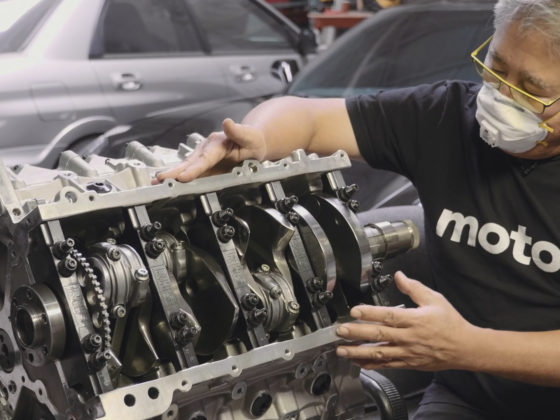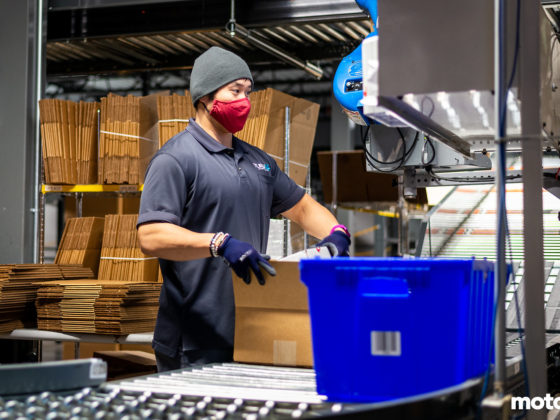
For pistons we selected Nissan specialists Jim Wolf Technologie’s pistons that are made by JE to Jim Wolf’s specifications.
The greater expansion usually means that wider piston to wall clearances are needed to avoid scuffing and even seizing. Not so with FSR pistons. JE has the piston skirt design and barrel profile down so clearances can be minimized and we have found FSR pistons to run pretty quietly when we have used them, which is great for street engines. The strut-type design also means minimal weight, as there is no excess material unlike fully skirted pistons.
The FSR forging has some flying buttresses that brace the undercrown of the piston to the piston pin area. This greatly strengthens the piston pin boss and the crown of the piston without adding much weight and allows the use of a short piston pin to further reduce weight. The buttresses are added as a result of FEA stress analysis.

The JWT piston is domed and will yield our build a compression ratio of 12:1 vs the stock pistons 11:1. The pistons also have generous valve reliefs as the VVEL system is capable of quite a bit of lift and duration. JWT has also added a fire passage in the dome near the spark plug to help with flame propagation during ignition. JWT has found that this is good for a few hp.
Other JWT unique features include gas porting for the top compression ring and additional oil drain back ports for the oil rings. This helps the custom Total Seal low tension ring package to seal and reduces oil consumption with low tension rings. The JWT pistons also feature a dry film lubricant coating on the skirts.

The FSR piston pin boss design allow the use of a short, lightweight piston pin without sacrificing strength. To reduce friction and to insure a long service life, we WPC treated the ring groove area of the piston to prevent microwelding from the rings too the grove flats and also the piston pins. WPC Treatment is a Japanese superfinishing process that leaves a thin, hard and super smooth surface on metal parts that is super low friction and wear resistant. It is also difficult for a crack to propagate in the WPC treated surface. If you want to read more on how WPC works check this out.

JWT’s ring spec includes some super low tension rings from Total Seal to reduce friction. Since more than half of the total friction in an engine comes from the rings, this can be a significant gain in power with an NA engine. The rings depend on a lot of the built in features in the JWT piston like the gas ports and the additional oil ring drain back to work well so they are an engineered package with the piston. The pistons and ring package have been proven for durability in Grand Am and endurance racing.




9 comments
Interesting – I’d always wondered what the limits would be on those. I feel like the valve actuation system is really cool for at least OEM power goals.
The biggest issue is oil temperature on track. They make great street motors; but a VQ35HR head is going to be the better option for extended high RPM use.
What’s the pros and cons of keeping the MAF sensors compared to using a MAP sensor in this application? (I’m assuming an aftermarket ecu will be used)
We are using the OEM ECU tuned by Specialty Z using ECUTEK
ECUTEK is pretty versatile for what it is. I think it is the best option for OEM our of the few pieces of software out there.
“super low tension rings from Total Seal to reduce friction” can you provide Part number?
Have you guys done at on the setup yet. If so what was the power outcome
https://motoiq.com/building-the-nissan-vq37vhr-part-4-making-the-big-power/
Can you direct me where to buy this particular spec of JE pistons and rings set please? I couldn’t find it anywhere on JWT or JE website. Cheers